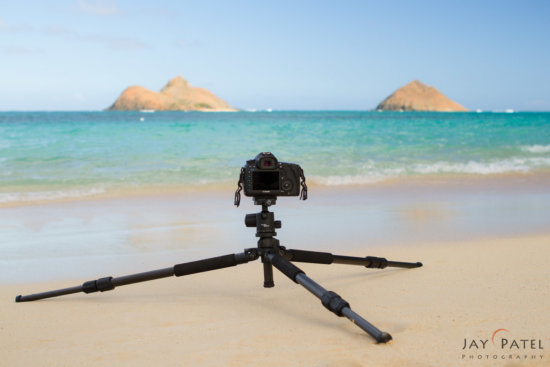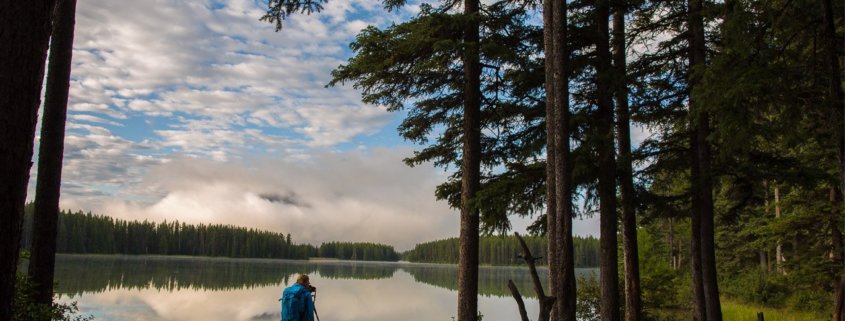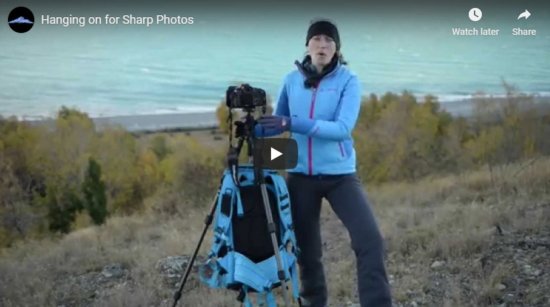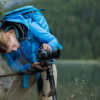How to Choose a Perfect Tripod for Landscape Photography
Let’s put it bluntly: if you want to do serious landscape photography and ensure that your pictures are sharp, the single most important element of your equipment is a tripod.
Today’s cameras and lenses, even some of the entry-level ones, are perfectly capable of creating sharp and detailed images in most circumstances. If you think your images are fuzzy, it’s unlikely that getting more megapixels or more glass will make much of a difference. Chances are the fuzziness is caused by bad technique, a flimsy tripod, or both.
Visual Wilderness has many resources about employing the proper technique to ensure maximum sharpness, but the most accurate focus and the most appropriate shutter speed amount to nothing if the camera is not firmly fixed in position.
With this article, I want to give you some criteria for choosing the right tripod for landscape photography. These are derived from having bought way too many tripods until finally settling on the right one for me. I won’t be mentioning any specific models or brands because I believe there are many excellent ones. Choose one based on its characteristics, from a reputable manufacturer, and within your budget.
Speaking of budget, let’s start with discussing prices.
Price
I’ve seen too many aspiring photographers put thousands of dollars of camera gear on inadequate tripods. It’s as if they spent all their money on electronics and glass and had only pennies left to buy a decent tripod. More likely, they are not aware of the importance of the latter. They likely don’t perceive the difference in quality between a $100 dollar tripod and one that costs five times as much. They just don’t think the price difference is justified.
Unfortunately, I believe they are wrong. Tripods are items whose price correlates almost linearly with quality and performance. In other words, a $500 tripod is pretty much five times better than a $100 one.
People who don’t appreciate this usually end up buying a $100 tripod at first, if not an even cheaper one (I know, my first tripod cost me about $30!). They soon realize it’s not very good, put it aside, and buy a $200 one. The thing might repeat a few times, until they settle on a really good tripod. In the process, they spend much more money than they would have if they went straight for a high quality tripod.
In this field, the old saying “the more you spend, the less you spend” is absolutely true.
Height
Your tripod should be tall enough to let you work comfortably. The viewfinder of your camera should be at the height of your eyes, without extending the central column. If your tripod is too low, you will have to to bend over often. This is bad for your back and becomes uncomfortable after long periods of time. To mend this issue, you will extend the central column, which is bad for stability.
If you have spent a lot of money on a sturdy tripod but you always extend the central column, you are giving up much of the stability for which you paid a premium.
I also appreciate having a hook at the bottom of the central column where I can hang my backpack to keep it above the ground (helpful if it’s wet and dirty) and weigh down the whole ensemble, therefore increasing its stability as shown in this video
There are situations where extending the central column is the way to go, otherwise tripod manufacturers wouldn’t have put it there. One of them is when you are standing on a slope, so the feet of the tripod are lying lower than your feet and you need the extra height. But on flat terrain, you should never have to extend the central column.
Number of Tripod Leg Sections
The criteria for choosing how many sections a tripod’s legs should have is quite straightforward: the fewer the sections, the better. Fewer sections mean the tripod is more rigid because there are fewer joints and the lower sections are thicker.
So, the perfect tripod is tall enough and has two, or at most three, sections. However, that means it is very long when folded. Some people, me included, prioritize portability over height and rigidity, to a certain extent. We must compromise between overall tripod height when extended, length when folded, and number of leg sections.
Besides my main tripod, which lets me use my camera comfortably at eye level and whose legs have fours sections, I also have a smaller tripod for short trips, when I fly with carry-on luggage only or I think I will only use it occasionally during a trip. My travel tripod is short, so I have to bend over to use it, but I can cope with this if I don’t use it for long periods of time. It is also more flexible than the full-size one, so I have to be more careful and it’s not very good in high winds. On the plus side, it folds down to only 35cm (14”) so it fits perfectly inside a small trolley and even in my shoulder bag. It’s a compromise, but I prefer to carry an inferior tripod than no tripod at all.
Type of Head
If you use a DSLR or anything that shoots up to 35mm format (aka full frame) with the lenses that are typically used for landscape photography, you want a ball-head, full stop. I’ve never seen a serious landscape photographer use anything but a ball-head with that equipment. While a three-way head allows more precise adjustments, it’s more cumbersome, bulkier, and slower to operate. I’ve used a ball-head even with a medium format digital mirrorless camera, which is slightly bulkier than a DSLR.

Carbon fiber tripod with a ball head for landscape photography – Lanai Kai, Oahu, Hawaii by Jay Patel
Something larger and heavier, like a view camera, might be better mounted on a three-way head. Operating a view camera is such a slow and methodical process that the time needed to adjust the head becomes insignificant. With that equipment, the arms of a three-way head give more leverage and safety.
If you also plan to shoot a lot of videos and want to limit your investment, by all means get a three-way head instead. It’s better to have one good head, no matter which type, than two cheap and inferior heads.
It’s important that your head is able to withstand the weight of your heaviest camera and lens. This means it stays locked in place without sagging under the weight of what’s on top of it.
A good quality ball head can be pricey. However, just like with the tripod, it doesn’t make sense to spend a lot of money in a multi-megapixel camera and sharp glass if you are going to put them on an unstable platform.
Tripod Material
Modern tripods have legs that are made of aluminum or carbon fiber. Both are perfectly good and none is better than the other. The only difference is that a carbon fiber tripod is going to be lighter than an aluminum one of comparable rigidity. It is also going to be more expensive.
If carrying more weight in the field is not a problem to you, save some money and get an aluminum tripod. However, don’t make the mistake of buying a tripod that is so heavy that you end up always leaving it at home. Once again, you will have wasted your money while trying to save it.
Other considerations when choosing your tripod
Twist locks or flip locks? I have used both and have developed a slight preference for twist locks. But, I chose a tripod based on all the other criteria I have outlined above and it happened to have twist locks. If you do the same and end up liking one that has flip locks, that’s great. Don’t let this detail determine your decision; it’s just not that important.
A tripod a reversible central column is great for macro photography. This allows you to get your camera really low on the ground. Although, I don’t shoot macro so I never reverse mine. On the other hand, being able to lock the legs at different angles is a must-have in my opinion, as it allows you much more flexibility when you are not on flat terrain.
This is pretty much all you must know in order to choose the perfect tripod for your landscape photography. If you have further questions, ask them in the comments and I will do my best to answer them.
I would love to know what kind of tripod you have, whether you are satisfied with it, and what kind of tripod you plan to buy, if you aren’t satisfied with your current one.










